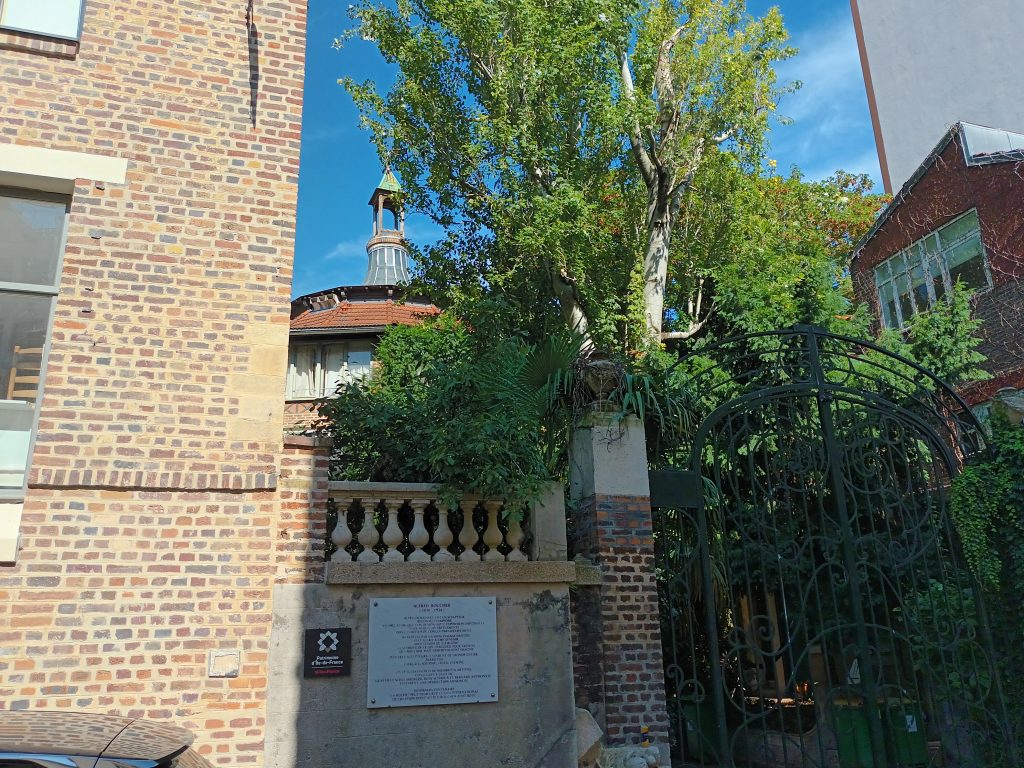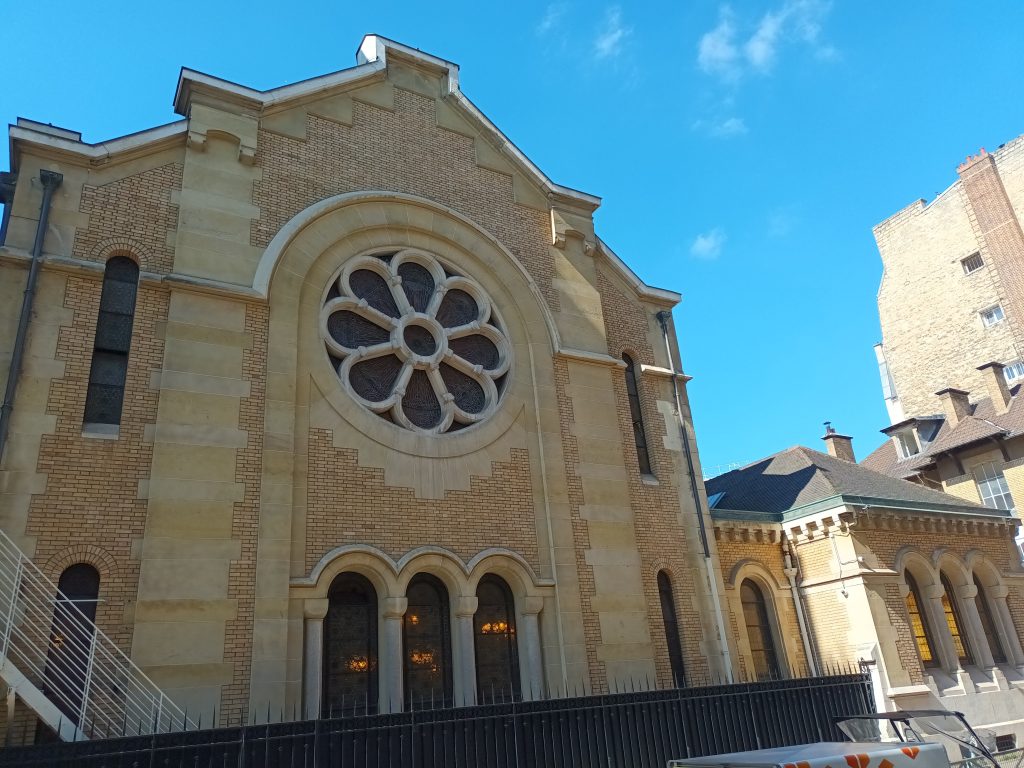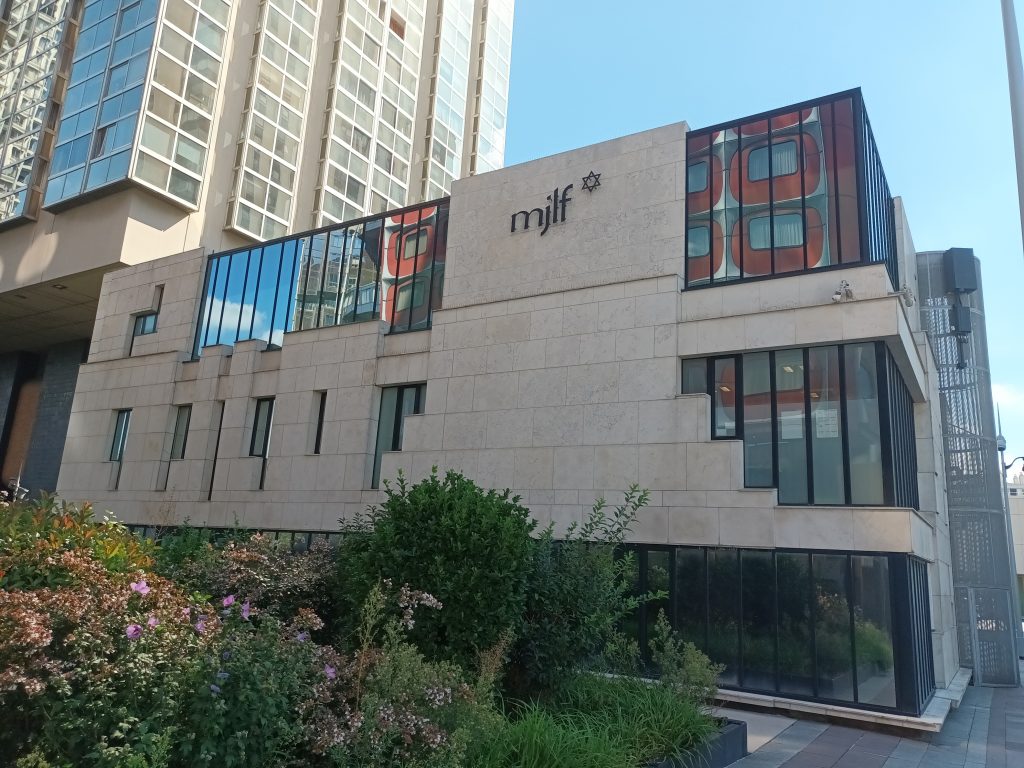At the beginning of the twentieth century, the legendary bohemia of Montparnasse included many Russians Jewish painters who had fled the anti-Semitic pogroms of the day. Among them were Soutine, Chagall, and Zadkine. Others, such as Modigliani, were simply attracted by the city’s prestige and contributed to the tremendous creative effervescence of the day.

These inspired individuals, spurred on by these emancipations, settled in Paris at the beginning of the 20th century. By confronting and sharing their art thanks to the French sculptor Alfred Boucher, who wanted to bring together young artists without resources to work in a fraternal spirit. A former rotunda from the 1900 Universal Exhibition, with 200 studios. A city within a city, it brought together Fernand Léger, Marie Laurencin, Matisse, Soutine, Modigliani, Chagall and Douanier Rousseau, as well as writers Apollinaire, Tchekov and Max Jacob.
Among them were many Jewish artists fleeing the pogroms and quotas to settle in Paris. There, to see Expo 1900, its museums, salons and the development of the art market with its galleries. Boucher nicknamed his artists ‘his bees’, hence the building’s nickname: the Beehive .
This gave rise to the term ‘Paris School’, referring to the non-French artists who took part in this artistic encounter between these artists and the muse city. With this willingness to look inside and outside themselves. And the appearance of extras, figurines of childhood in their works, these characters always so touching and so distant from their childhood, removed by the twists and turns of History, like the violinist on a roof in a painting by Chagall, cheering up the shtetl.
Division 22 of the Montparnasse cemetery is the resting place of the painter Jules Pascin, one of the “artistes maudits” who lived out his wild, nocturnal life in this quarter. Born in Bulgaria in 1885, he committed suicide in Paris in 1930.
A drawing engraved on his tombstone evokes his work, accompanied by the words: “A free man, hero of dreams and desire, opening the golden doors with his bleeding hands, flesh and blood, Pascin disdained to choose and, master of life, ordained his own death.” A little further on, in Division 28, a white stone bears the name of the officer Alfred Dreyfus (1859-1935). Here lies the man who was wrongly accused of high treason, of betraying French military secrets to Germany.

West of Montparnasse, near the avenue de Ségur, curious travellers will make a point of visiting what older Parisians consider to be one of the capital’s most handsome and original synagogues. The Chasseloup-Laubat synagogue. , consecrated on September 29 1913, was designed by the architect Bechmann. The square hall has sides fifteen yards long. The gallery is supported by wooden columns that rise all the way to the octagonal wooden dome of the roof.
The synagogue JEM Beaugrenelle , part of the liberal Judaïsme En Mouvement (JEM) offers one of the most original modern architectural creations. It is located at the movement’s Community center which also hosts a reception hall and classes, inaugurated in 1980 by Rabbi Daniel Farhi. The building is covered with ceramic tiles and is visible from two streets superposed.
The interiors of the synagogue are quite sober, using mostly wood and Hebrew scriptures. Rabbi Delphine Horvilleur participates in numerous contemporary national debates and projects, having been after Pauline Bebe the second nominated woman rabbi. The movement has since been joined by other men and women rabbis.

The Massorti movement appeared in France in the 1980s. Several Massorti communities are present in Paris. The largest being that of Adath Shalom , headed by Rabbi Rivon Krygier. The presence and contemporary development explains the modernity of the synagogues welcoming the liberal and massorti movements. The one where Rivon Krygier officiates is located rue George Bernard Shaw, in the 15th arrondissement. A district that harmoniously hosts three important synagogues of Parisian life, each linked to a movement.
Talking about moving, many steps, images and sounds whirl around the stage of the Rachi – Guy de Rothschild Center which welcomes many events related to Jewish culture in its big auditorium. Among them concerts, conferences and major annual events such as the Jazz n’Klezmer Festival with artists from all over the world sharing the stage here and all around France and the Diasporama Festival dedicated to Jewish themed movies tackling all types of subjects.
Movements are a big part of music. Created in 2006, the European Institute of Jewish Music is dedicated to collecting, preserving and disseminating Jewish musical heritage in France and abroad. On stage, Guy Bedos spoke of the diversity of Jewish cultural expression, pointing out that for Enrico Macias, what Serge Gainsbourg sang was probably not quite Hebrew. It’s this diversity of places, times, styles and eras that you’ll discover at the IEMJ, whose website features numerous playlists, radio and TV broadcasts and concerts. Wishing you a pleasant musical journey.